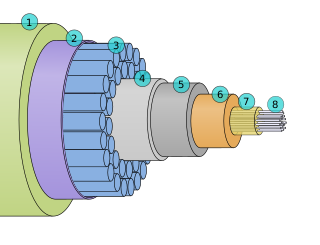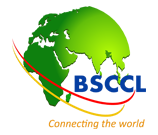Posts and telecommunications have long played an essential role in Lebanon, a small country with an expansive diaspora, a vivid media landscape, and an economy geared toward trade and banking. The sector's history has nonetheless been chaotic, marked by conflict but also, and perhaps most importantly, a deeply rooted legacy of state control, weak competition, and intense politicization. A combination of poor services and high prices culminated in popular protests against the government's attempt, in October 2019, to tax the widely used messaging service WhatsApp. The anger this measure triggered captured a more general sense of dissatisfaction, and contributed to tipping the country into a protracted crisis. Civil unrest coincided with Lebanon's default on its ballooning debt; in the ensuing economic collapse, telecommunications have been among the infrastructure most affected.
Telecommunications in the United Arab Emirates (UAE) is under the control and supervision of the Telecommunications and Digital Government Regulatory Authority which was established under UAE Federal Law by Decree No. 3 of 2003. From 1976 to 2006 the Emirates Telecommunications Corporation (Etisalat) was the sole telephone and telecommunications provider for the UAE. And while there were exceptions for free zones and modern housing developments, for the majority of the UAE, Etisalat held a monopoly on business and personal telecommunications services. In February 2006, this monopoly became a duopoly when a new telephone company and Internet service provider (ISP), du, was established to offer mobile services across the UAE and Internet and TV services to some free zone areas. However, due to geographical distribution of service areas, the companies do not compete for customers and thus effectively operate as monopolies. Earlier du provided triple play services to free zone areas under the name Emirates Integrated Telecommunications Company (EITC), which is still its legal name.

A submarine communications cable is a cable laid on the seabed between land-based stations to carry telecommunication signals across stretches of ocean and sea. The first submarine communications cables were laid beginning in the 1850s and carried telegraphy traffic, establishing the first instant telecommunications links between continents, such as the first transatlantic telegraph cable which became operational on 16 August 1858.

Telecommunications in Armenia involves the availability and use of electronic devices and services, such as the telephone, television, radio or computer, for the purpose of communication. The various telecommunications systems found and used in Armenia includes radio, television, fixed and mobile telephones, and the internet.
The liberalization of Bangladesh's telecommunications sector began with small steps in 1989 with the issuance of a license to a private operator for the provision of inter alia cellular mobile services to compete with Bangladesh Telegraph and Telephone Board (BTTB), the previous monopoly provider of telecommunications services within Bangladesh. Significant changes in the number of fixed and mobile services deployed in Bangladesh occurred in the late 1990s and the number of services in operation has subsequently grown exponentially in the past five years.
Telecommunications in Cuba consists mainly of NTSC analog television, analog radio, telephony, AMPS, D-AMPS, and GSM mobile telephony, and the Internet. Telephone service is provided through ETECSA, mobile telephone service is provided through the Cellular Telephone Company of Cuba (CUBACEL) and, previously, Caribbean Cellular. Cuba's main international telecommunications links are through Intersputnik, with limited effectiveness of undersea telephone cables to the Americas, Spain, and possibly Italy due to underdevelopment.

South East Asia–Middle East–Western Europe 4 is an optical fibre submarine communications cable system that carries telecommunications between Singapore, Malaysia, Thailand, Bangladesh, India, Sri Lanka, Pakistan, United Arab Emirates, Saudi Arabia, Egypt, Italy, Tunisia, Algeria and France. It is intended to be a complement to, rather than a replacement for, the SEA-ME-WE 3 cable.

The Internet in South Africa, one of the most technologically resourced countries on the African continent, is expanding. The internet country code top-level domain (ccTLD) .za is managed and regulated by the .za Domain Name Authority (.ZADNA) and was granted to South Africa by the Internet Corporation for Assigned Names and Numbers (ICANN) in 1990. Over 60% of Internet traffic generated on the African continent originates from South Africa. As of 2020, 41.5 million people were Internet users.
Broadband Internet in Israel has been available since the late 1990s in theory, but it only became practically accessible to most customers in 2001. By 2008, Israel had become one of the few countries with developed broadband capabilities across two types of infrastructure—cable and DSL—reaching over 95% of the population. Actual broadband market penetration stands at 77%, ranked 7th in the world. In 2010, Israel was ranked 26th in The Economist's Digital Economy Rankings. In 2022, Israel was ranked first for digital quality of life by Surfshark.
Unity is a Trans-Pacific submarine communications cable between Japan and the United States that was completed in April 2010.
Like many developed and developing countries, the Internet in Bangladesh has witnessed significant growth. Although facing many constraints in expanding Internet access and use, development of the Internet and Information Technology are high government priorities. In March, 2021 Internet users in Bangladesh increased to 116 million. On 19 February 2018, Bangladesh started the 4G network service.
Telecommunications in Angola include telephone, radio, television, and the Internet. The government controls all broadcast media with a nationwide reach.
Europe India Gateway (EIG) is a submarine communications cable system that connects the U.K., Portugal, Gibraltar, Monaco, France, Libya, Egypt, Saudi Arabia, Djibouti, Oman, United Arab Emirates, and India.

Broadband is a term normally considered to be synonymous with a high-speed connection to the internet. Suitability for certain applications, or technically a certain quality of service, is often assumed. For instance, low round trip delay would normally be assumed to be well under 150ms and suitable for Voice over IP, online gaming, financial trading especially arbitrage, virtual private networks and other latency-sensitive applications. This would rule out satellite Internet as inherently high-latency. In some applications, utility-grade reliability or security are often also assumed or defined as requirements. There is no single definition of broadband and official plans may refer to any or none of these criteria.
BDSNi is a fiber optic submarine communications cable system that links the islands of the Bahamas, and also provides connectivity to Haiti via a spur connection.

Angola Cables is an Angolan multinational telecommunications operator of fiber-optic telecommunication cables.
TSE-1 or Taiwan Strait Express 1 is the first submarine telecommunications cable directly linking Taiwan island and mainland China. At 270km in length, the cable offers the shortest route between Taiwan and mainland China while avoiding seismically active zones prone to disruption during earthquakes. TSE-1 was completed on January 18, 2013. Once activated, traffic between Taiwan and China will no longer have to be routed via the Asia-Euro Under-sea Optical Cable, the China-US Cable Network or the Asia Pacific Cable Network 2.
La Guinéenne de la Large Bande is a limited company in charge of managing the capacity allocated to Guinea on the Africa Coast Europe submarine cable (ACE) since March 2013.
South East Asia–Middle East–Western Europe 5 is an optical fibre submarine communications cable system that carries telecommunications between Singapore and France.
South East Asia–Middle East–Western Europe 6 is an in-progress optical fibre submarine communications cable system that would carry telecommunications between Southeast Asia, the Middle East, and Western Europe. Construction began in early 2022. It is expected to be operational in the first quarter of 2025 The expected cable length is 19,200 km and it has a design capacity of 126 Tbit/s, using SDM technology.






